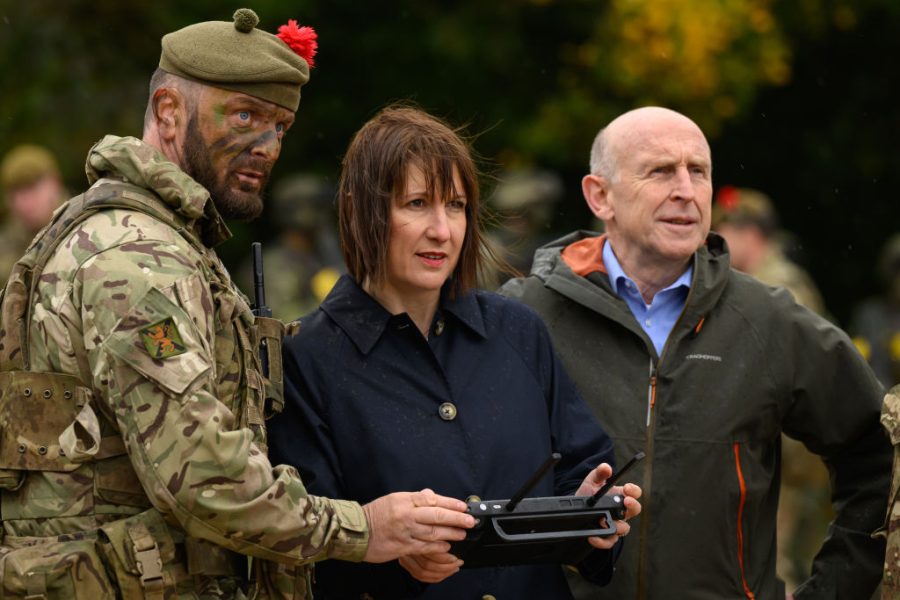Anyone who is serious about the condition of the armed forces and Britain’s defence policy will not look a gift horse in the mouth. Rachel Reeves’s announcement in yesterday’s Budget that the government will spend an additional £2.9 billion on defence next year is welcome and desperately needed. But while it’s headline-grabbing, in reality it will make little difference to our national security and strategic posture.
It is acknowledged across the political spectrum that we need to spend more on defence
It is hard to think of a time, certainly since the end of the Cold War, when the international situation was so tense and challenging in so many areas. Russia’s brutal war of conquest in Ukraine is grinding towards its third winter, and although the United Kingdom has consistently been among the most unstinting donors of military and financial assistance, the West has pulled its punches. Ukrainian forces are still not allowed to use long-range ATACMS and Storm Shadow missiles against all targets in Russia.
In the Middle East, Houthi militants continue to attack maritime commerce in the Red Sea off the coast of Yemen. Only the United States and the United Kingdom have provided significant military force to protect shipping and take on the Iranian-backed Islamists. China continues to flex its muscles in the Pacific, especially with regard to menacing Taiwan and asserting bogus territorial rights against Taiwan and the Philippines in the South China Sea. Meanwhile, with the drawing down of the French and American military presence, the African Sahel region is increasingly coming under the influence of Russia’s Africa Corps, created from the Wagner Group’s mercenary activities in the region.
At the same time as these complex security challenges, the United Kingdom’s armed forces are at full stretch and, arguably, beyond. In January, the House of Commons Defence Committee published a damning report entitled Ready for War?, which concluded that the armed forces were ‘consistently overstretched’ and ‘require sustained ongoing investment to be able to fight a sustained, high intensity war, alongside our allies, against a peer adversary’. In March, the Public Accounts Committee revealed that the Ministry of Defence’s equipment plan for 2023-33 contained a black hole, to coin a phrase, of at least £16.9 billion between commitments and resources.
The strains are obvious. Of the Royal Navy’s five Astute-class hunter-killer submarines, none has managed to complete an operational deployment this year, and three have been in dock for more than a year. The submarine HMS Ambush has not left HM Naval Base Clyde at Faslane since August 2022. When the United States conducted air strikes against Houthi positions in Yemen earlier in the year, the United Kingdom also participated, but the Royal Air Force was only able to contribute four Typhoon FGR4 fighter aircraft from RAF Akrotiri in Cyprus.
It is acknowledged across the political spectrum that we need to spend more on defence. The previous government had committed to increasing spending to 2.5 per cent of GDP by 2030 (although there was scepticism about how realistic this was). The Labour party’s manifesto pledged to match that increase, but, critically, the government has so far refused to set a timescale for this higher level of spending. Even the strategic defence review, launched in July, will not address this; its terms of reference note: ‘As set out in the Labour party’s manifesto, the government “will set out the path to spending 2.5 per cent of GDP on defence.” This will be dealt with at a future fiscal event’.
This is the gloomy and urgent backdrop against which the Chancellor’s additional £2.9 billion must be set. Reeves noted that it means ‘that the UK comfortably exceeds our Nato commitments’, but that should be taken as a given. The scale of the pressure on the defence budget is suggested by her subsequent remarks that we will provide ‘guaranteed military support to Ukraine of £3 billion per year for as long as it takes’. In effect, then, she has given the Ministry of Defence the equivalent to a year’s contribution to the war in Ukraine, and no more. What does ‘as long as it takes’ mean? What is the long-term plan?
Defence receiving an additional £2.9 billion is better than nothing. The Ministry of Defence’s annual budget, however, is more than £50 billion, and it is still inadequate. Until the government addresses long-term spending levels, at the very least setting a timeline for the otherwise-meaningless commitment to spend 2.5 per cent of GDP, and in truth probably spending substantially more than that, no major problems have been solved. This is a positive gesture, but a gesture is all it is.








Comments